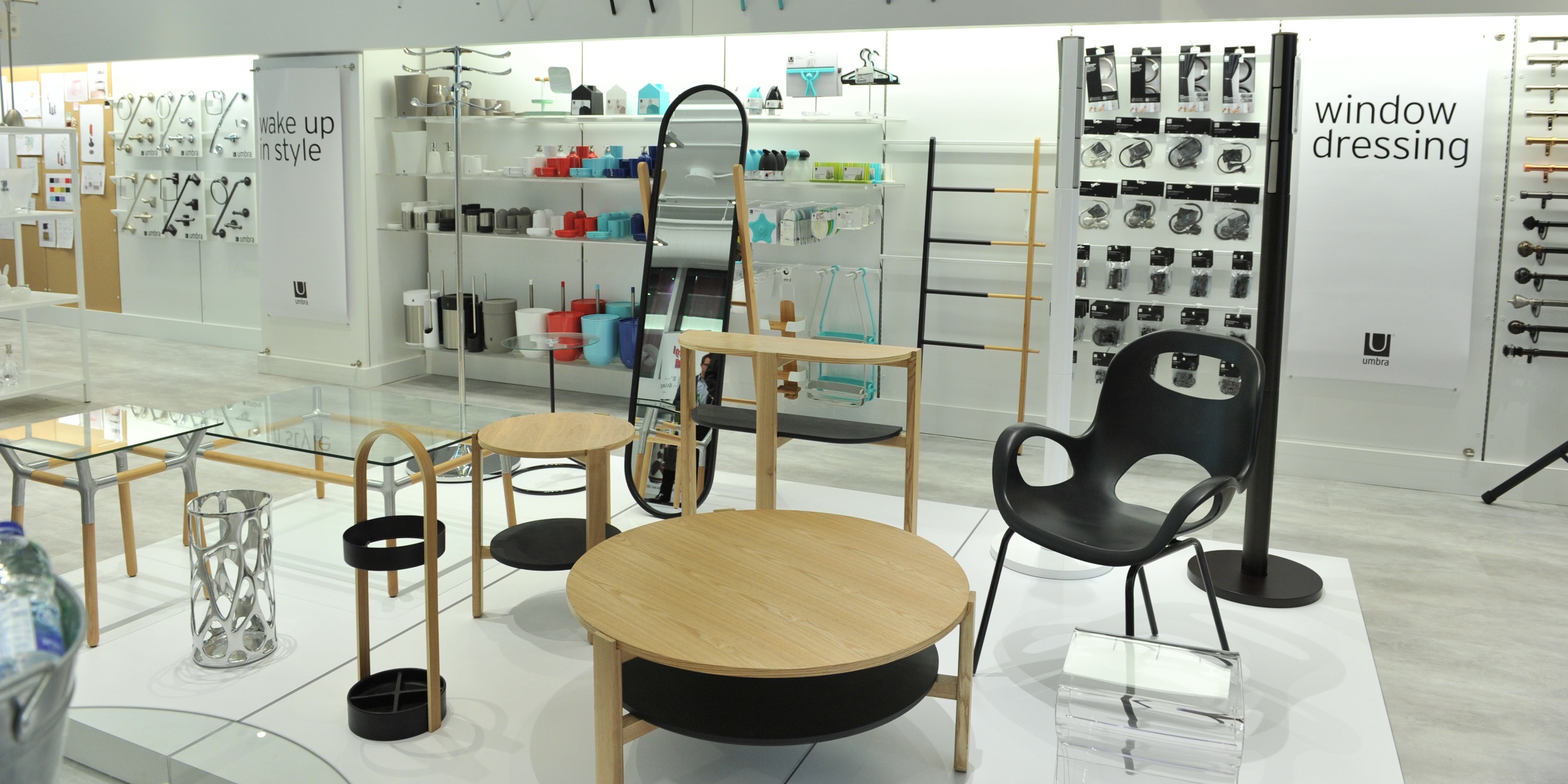Canadian home design retailer Umbra has revamped its Toronto flagship store to become an inspiration hub for local and aspiring members of the city’s industrial design community.
The pink-paneled building is the only place in the world where you can find all of Umbra’s products gathered in one physical location. The company relies on e-commerce and partnerships with retailers as diverse as Urban Outfitters and Home Hardware to sell its products.
A quick look around the store demonstrates just how ubiquitous the company’s designs have become. With Umbra products available at stores all over the world, it’s likely that you or someone you know have an Umbra-designed soap pump, storage bin or décor piece in your home. Some products, such as the Garbino garbage can, have become both popular home accessories and pieces of modern design history; in 2006, the Garbino was inducted into the Museum of Modern Art’s permanent collection.
One section of the store’s redesigned space has been dedicated to a retrospective of Umbra’s history and products, highlighting a number of product designs that clearly influenced other manufacturers. This showroom and the established retail space is also now accompanied by an area for Umbra’s designers to work and interact with customers (previously the designers have only worked at the company’s office in the suburb of Scarborough).
The store’s transformation was heavily influenced by input from the local design community, according to Sheila Murray, Umbra’s director of global marketing. “We reached out and said, ‘What do you envision? What are we to you today? And what do you see us being able to do in the future?’ It was really enlightening to see what they aspire Umbra to do.”
The company, currently celebrating its 35th anniversary, hopes its lone retail location will become something of an “activation lab” that inspires young Toronto designers—part of an established ethos of mentorship at the company. For years, co-founders Paul Rowan and Les Mandelbaum have channeled their success into advising Canadian design schools on their post-secondary programs. The company also hires interns and full-time staff from design schools all over Canada, including Emily Carr, OCAD, Ryerson and Carleton.
“We lend our experience to those institutions to shape the curriculum and shape those students who are graduating, so they can have a better chance of being successful,” says Mandelbaum, who with Rowan sat down for an interview with Marketing at the redesigned store.
“We want a young design graduate to hit the ground running with a company like Umbra,” added Rowan.
Mandelbaum and Rowan are lifelong friends, having met as kids while growing up in Toronto’s Jewish community. Both hung out in Yorkville’s music scene as teenagers, and after going their separate ways for a few years (Rowan as a graphic designer, and Mandelbaum touring with a company that supplied road gear to rock stars), the two started their design business together in 1980. Their first product was a window shade, which led to the name “Umbra” – the Latin word for shade or shadow.
Lately, the company’s marketing efforts have focused on Umbra Shift, a new collection of furniture and accessories that would fit in any design-inclined millennial’s living space. The collection’s Hanging Chair can be folded and hung up in the closet while not in use, while its Nest Caddy boxes double as storage and resting spaces for tablets and other devices. Rowan and Mandelbaum handpicked a group of international designers to take part in creating the collection.
Umbra is a rarity in today’s global marketplace — a large company with global reach that is still headquartered in Canada. While Canadian-ness may not have been front-of-mind when Umbra was first established, Rowan says being Canadian has been something of a benefit in a global marketplace in recent years.
“We look very fresh,” he says, particularly in European markets. “They see us as different.”
And as long as Mandelbaum has a say in the matter, the brand won’t be losing its Canadian ownership anytime soon.
“I get three calls a week asking if I’ll sell the company,” he says. “But why would I?”
















